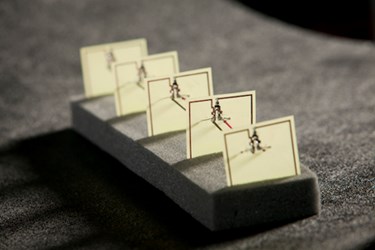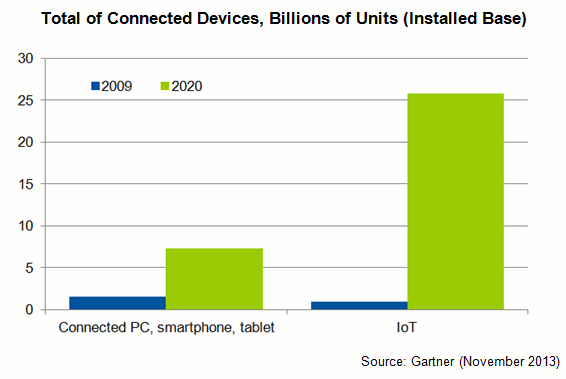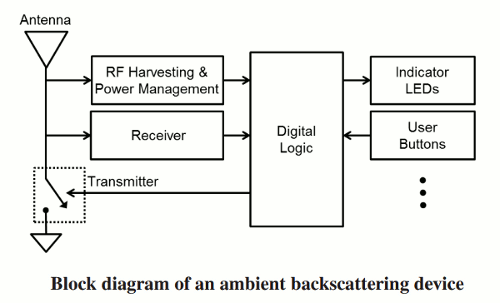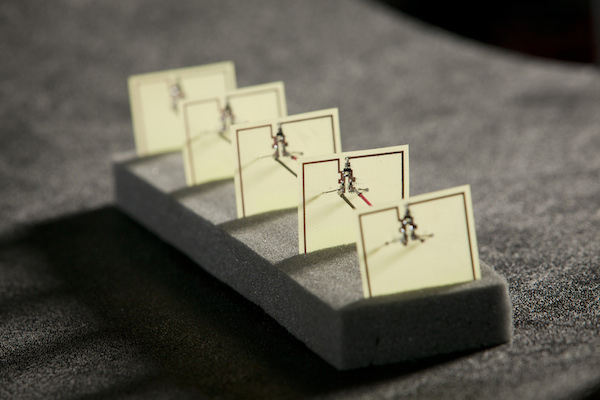Powering The Internet Of Everything — Without Batteries Or Wires
By Jim Pomager, Executive Editor

Apparently the term Internet of Things (IoT) wasn’t comprehensive enough. Now it’s the Internet of Everything (IoE).
Whatever you choose to call it, the movement to connect just about everything imaginable to the Internet is well underway — and is expected to proliferate wildly in the coming years. According to data from ABI Research, over 10 billion devices are already wirelessly connected today, and that number will swell to over 30 billion by 2020. Cisco is even more bullish in its projections, anticipating approximately 50 billion connected objects by 2020, and forecasting that IoE will generate $14.4 trillion in value for businesses and industries between the years 2013 and 2022.
It’s important to point out that the majority of these “things” will be everyday objects, not the conventional computing devices (PCs, smartphones, tablets, etc.) that currently make up the majority of connected technology. "Today, hub devices such as smartphones, tablets, and laptops are pivotal in enabling the IoE ecosystem and will continue to be an essential building block," Peter Cooney, practice director at ABI Research, said in a statement. "Future growth, however, is driven by node or sensor type devices, and by 2020 these will account for 60% of the total installed base of devices."

Gartner suggests that the manufacturing, healthcare, and insurance industries will be the leading adopters of IoE. The market research firm foresees a not-so-distant future in which manufacturers benefit from the production of billions (eventually trillions) of IoE devices, and from cost efficiencies gained through more efficient materials and component tracking. In healthcare, wearable devices will soon detect falls and other medical problems among patients, immediately notifying a doctor via email or text message. Car-based sensors will facilitate pay-as-you-drive insurance by allowing insurance companies to link customers’ driving behavior to risk profiles and premiums. And this is only the tip of the proverbial iceberg.
To achieve such lofty predictions, IoE still has some technical hurdles to overcome, not the least of which is powering these billions of connected devices, many of which are tiny and/or are located in areas where running wires or changing batteries is impractical. (Imagine replacing or recharging billions of batteries.) Continued advances in low-power wireless technologies like Bluetooth and ZigBee are certainly helping to lower the power requirements of IoE devices, but they’ll never completely eliminate the need for energy. Solar power offers an interesting possibility; however, sunlight isn’t always readily available (or ever available) in some applications.
Wouldn’t it be nice if we could power IoE (and other) devices without batteries or wires by harvesting an almost ubiquitous energy source, like radio waves and microwaves? Two recently published research papers promise to achieve that very feat — and potentially power the IoE revolution.
Backscattering Ambient RF Signals
Shyam Gollakota and colleagues at the University of Washington (UW) have developed a new technique that enables two devices to communicate with each other using ambient RF signals — such as TV or cellular transmissions — as their (only) power source and as a communication medium. Dubbed “ambient backscatter,” the approach is similar in concept to the traditional backscatter communication used in RFID tags, insofar as both reflect RF signals without the use of an onboard power source. Unlike RFID, however, ambient backscatter repurposes existing RF signals in the environment, meaning it doesn’t require dedicated power infrastructure (e.g. an RFID reader) and thus has a much smaller environmental footprint. In addition, ambient backscatter allows for device-to-device communication, whereas RFID tags are oblivious to one another and only talk to an RFID reader.
To test their technique, the team developed battery-less, credit card-sized prototype devices. Each incorporated a transmitter, a receiver, and an energy harvester (see block diagram below), and were mounted to an ordinary printed circuit board along with a dipole antenna and an LED light that flashed when a signal was received from another of the devices. The devices were tuned to communicate by using UHF TV signals in a 50-MHz wide frequency band centered at 539 MHz. Groups of the devices were then placed in various indoor and outdoor locations in the Seattle area, at varying distances from a local TV tower.

The devices successfully interacted with one another and with users at distances of up to 6.5 miles from the TV tower. The transmission rate was 1kbps — enough, for example, to transmit a smart card payment (as the researchers demonstrate in the video below) or communicate that a product is missing or out of place on a grocery store shelf — between devices located within 2.5 feet of each other outdoors, and within 1.5 feet of each other indoors. The devices did not interfere with transmissions outside of 7.2 inches from the TV’s antenna.
The UW team believes its technology will find its ways into all manner of objects and applications. For instance, it could enable communication with a lost set of car keys, revealing their location. Or it could be embedded into a bridge to monitor the structure’s condition, sending an alert if concrete begins to crack or steel begins to weaken. It could allow smartphones to send text messages even when their battery is dead, or deliver power to implantable medical devices.
Using Metamaterials To Harvest Microwaves
Duke University researchers, meanwhile, have designed a power-harvesting device based on metamaterials, artificial materials engineered with properties that aren’t found in natural materials. By specially configuring and tuning these metamaterials, the team was able to create a device that can efficiently convert incident RF power into DC power.
The device consists of a parallel series of five power-harvesting split-ring resonators (SRR) tuned to resonate at 900 MHz (see photo below). The SSR array was placed in an open waveguide, where input power was applied using a signal generator and amplifier, and output power was measured using an oscilloscope. In experiments, the circuit converted microwaves into 7.3 V of electricity, more than the voltage produced by typical USB chargers for small electronic devices. Energy efficiency was 37 percent, comparable to that of modern solar cells.

The metamaterials delivered benefits that antenna-based microwave power harvesting devices often lack. “When traditional antennas are close to each other in space, they talk to each other and interfere with each other’s operation,” Alexander Katko, a Duke graduate engineering student who worked on the project, said. “The design process used to create our metamaterial array takes these effects into account, allowing the cells to work close together.” As a result, additional arrays can be added to increase scavenged power.
As with the UW team, the Duke researchers envision a myriad of future applications for their power-harvesting technology — especially since it can be tuned to capture different types of signals. For instance, signals from passing satellites could be used to power sensor networks in remote locations, metamaterials applied to a ceiling could recover unused Wi-Fi signals, or nearby cell towers could wirelessly recharge cell phones.
Perhaps those who scoffed at the notion of recharging a smartphone with your microwave oven will find these recent UW and Duke findings more… palatable. Continue doubting if you will, but the Internet of Everything is coming, and RF energy harvesting will undoubtedly play an important role in facilitating it. There are 50 billion reasons why.
